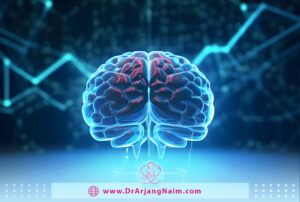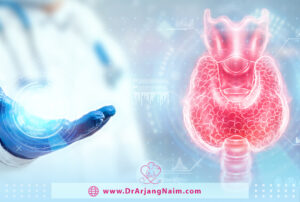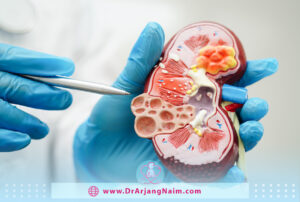Hormones are essential chemical messengers produced by various glands in the endocrine system. They play a crucial role in regulating numerous physiological processes and maintaining overall balance within the body. These tiny molecules circulate through the bloodstream, binding specific receptors on target cells and triggering a cascade of responses to control functions like growth, metabolism, reproduction, mood, and more. The endocrine system’s intricate network of hormones ensures that various organs and tissues communicate effectively, maintaining homeostasis and coordinating complex bodily functions. Hormones are powerful and influential substances, often profoundly affecting both physical and emotional well-being.
What do hormones do?
They are chemical messengers that influence and manage hundreds of bodily processes. Often, a body process involves a chain reaction of several different hormones.
A hormone only affects the appropriate part of the body if the cells in the target tissue have receptors that receive the hormone’s message. Think of the hormone as a key and the cells of its target tissue, such as an organ or fat tissue, as specially shaped locks. If the hormone matches the cell wall lock, it works. The hormone sends a message that causes the target site to take a specific action.
The body uses hormones for two types of communication. The first type is communication between two endocrine glands: one gland secretes a hormone that stimulates the other gland to change the level of the hormones it releases. An example of this connection is between the pituitary gland and the thyroid gland. The pituitary gland secretes thyroid-stimulating hormone (TSH), which stimulates the thyroid gland to release its hormones, affecting various aspects of the body.
The second type is the communication between the endocrine gland and the target organ. An example is when the pancreas releases insulin, which then acts on the muscles and liver to help process glucose.
Which body tissues make hormones?
The specialized glands that comprise the endocrine system secrete most hormones in the body. A gland is an organ that produces one or more substances, such as hormones, digestive juices, sweat, or tears. Endocrine glands release hormones directly into the bloodstream.
The endocrine system consists of the following glands:
- Hypothalamus
- Pituitary gland
- Pineal gland
- Thyroid
- Parathyroid gland
- Adrenal glands
- Pancreas
- Ovaries
- Testes
But not all organs and tissues that release hormones or hormone-like substances are part of the endocrine system. Other body tissues that release include:
- Adipose tissue
- Kidneys
- Liver
- Gut
- Placenta

Hypothalamus
The hypothalamus is a small brain area connected to the pituitary gland through the pituitary stalk. It secretes several hormones that control the pituitary gland. The hypothalamus makes the following :
- Corticotrophin-releasing hormone
- Dopamine
- Gonadotrophin-releasing hormone
- Growth hormone-releasing hormone
- Oxytocin
- Somatostatin
- Thyrotropin-releasing hormone
Pineal gland
The pineal gland is a small brain gland located under the dorsal part of the corpus callosum. It releases the hormone melatonin, which helps control the sleep-wake cycle.
Pituitary gland
The pituitary gland is a pea-sized gland at the brain’s base, behind the nose’s bridge, and directly below the hypothalamus. It consists of two lobes: the posterior lobe and the anterior lobe. The pituitary gland secretes several hormones, many of which control the function of other endocrine glands. The anterior pituitary makes and releases the following six hormones:
- Adrenocorticotropic hormone (ACTH or corticotropin)
- Follicle-stimulating hormone (FSH)
- Growth hormone (GH)
- Luteinizing hormone (LH)
- Thyroid-stimulating hormone (TSH)
Prolactin
The posterior pituitary secretes the following hormones:
- Antidiuretic hormone
- Oxytocin

Thyroid gland
The thyroid is a small butterfly-shaped gland in the front of the neck and under the skin. The primary function of the thyroid is to control the rate of metabolism, which is how the body converts the food we consume into energy. The thyroid secretes the following hormones:
- Thyroxine (T4)
- Triiodothyronine (T3)
- Reverse triiodothyronine (RT3)
- Calcitonin
Adrenal glands
Adrenal glands are small triangular-shaped glands located on top of each kidney. They make the following hormones:
- Cortisol
- Aldosterone
- DHEA and androgens
- Adrenaline (epinephrine)
- Noradrenaline (norepinephrine)
Parathyroid glands
Most people have four pea-sized parathyroid glands located behind the thyroid gland. The parathyroid glands are sometimes located along the esophagus or in the chest. These glands are known as ectopic parathyroid glands. The main function of the parathyroid glands is to secrete parathyroid hormone (PTH), which is responsible for calcium balance in the blood and bone health.
Pancreas
The pancreas is an organ in the back of the abdomen. It is part of your digestive system and endocrine system. Islet cells in the pancreas make the following hormones:
- Insulin
- Glucagon
Ovaries
People assigned female at birth (AFAB) have two ovaries, one on either side of the uterus below the opening of the fallopian tubes. In addition to having egg cells necessary for reproduction, the ovaries produce the following hormones:
Testes
People assigned male at birth (AMAB) have two testicles that hang in a sac outside their body below their penis. The testicles are part of the male reproductive system and produce sperm and the hormone testosterone.
Adipose tissue
Adipose tissue is commonly known as body fat. It is found throughout the body, including under the skin, around internal organs, between muscles, in the bone marrow, and breast tissue. Adipose tissue makes and releases the following hormones:
- Leptin
- Adiponectin
- Plasminogen activator inhibitor-1
- Estrogen
- Angiotensin

Kidneys
Kidneys are two bean-shaped organs that filter blood. They are part of the urinary system, but they also produce hormones, including:
- Erythropoietin
- Renin
- An active form of vitamin D
Liver
The liver is an essential organ and gland that performs hundreds of vital functions to sustain life. It is part of the digestive system, but it also produces hormones, including:
- Insulin-like growth factor 1 (IGF-1)
- Angiotensinogen
Gut (gastrointestinal tract)
The intestine (digestive tract) is a long, connected tube that starts from the mouth and ends at the anus. Responsible for digestion Scientists are currently studying the hormones that the gut makes and their effects. These hormones include:
- Ghrelin
- Somatostatin
- Glucagon-like peptide 1 (GLP-1)
Placenta
The placenta is a temporary organ that develops in the uterus during pregnancy. It provides oxygen and nutrients to the developing fetus. The placenta produces estrogen and progesterone to maintain pregnancy.
Hormonal Diseases
When there is a malfunction of the endocrine glands, several hormonal diseases occur. Common hormonal problems are related to the hypothalamus, adrenals, and pituitary glands. Increasing or decreasing the secretion of these hormones can greatly affect growth, metabolism, and development.
Hormonal imbalances cause hyperthyroidism, osteoporosis, and diabetes. Factors responsible for hormonal diseases can be genetic, environmental, or diet related.
What is the cause of hormonal imbalance?
Any hormone-related disease can have several different causes. In general, the main conditions or situations that cause hormonal imbalance are:
- Hereditary gene mutations
- Autoimmune conditions
- Damage or injury to an endocrine gland
- Tumors, adenomas, or other growths

Hormonal Imbalance
Hormonal imbalance disrupts the delicate equilibrium of hormones within the body, leading to various physiological and psychological effects. Hormones regulate various bodily functions, including metabolism, growth, reproduction, mood, and sleep. When there is an excess or deficiency of certain hormones, it can result in significant health issues.
One common cause of hormonal imbalance is stress, which can trigger the overproduction of cortisol, the body’s primary stress hormone. This can lead to sleep disturbances, weight gain, and a weakened immune system. Another well-known hormonal imbalance is in conditions like polycystic ovary syndrome (PCOS), where higher-than-normal androgens (male hormones) affect female fertility and menstrual cycles.
Hormonal imbalances can manifest differently in men and women, and their symptoms can be diverse and often confusing. Women may experience irregular periods, mood swings, and unexplained weight gain, while men might encounter decreased libido, fatigue, and muscle loss.
Addressing hormonal imbalances typically involves a combination of lifestyle changes, dietary adjustments, and, in some cases, medical interventions. Recognizing the signs and seeking appropriate medical advice can significantly improve the quality of life for those affected by hormonal imbalances. Early detection and treatment are crucial in managing the symptoms and preventing potential complications, restoring the body’s hormonal harmony and overall well-being.
Why are hormones called chemical messengers?
The salient role of hormones is that of a messenger. The hypothalamus is a part of the forebrain that contains many secretory neurons. These neurosecretory cells specialize in releasing called neurohormones. They stimulate the anterior pituitary gland to produce various other hormones.
Sometimes, hormones act more like a regulator than a messenger. Changes in the level of hormone production led to certain changes in the body. Therefore, the hormone as a regulator maintains the homeostasis of the body. Once the hormones have reached their target, their production must be controlled, and this is achieved by a mechanism called the feedback control mechanism. The feedback mechanism can be positive or negative.
The bottom line
In conclusion, hormones play a fundamental role in maintaining the intricate balance within the human body, influencing numerous physiological processes and ensuring overall well-being. These chemical messengers orchestrate a complex symphony, regulating metabolism, growth, reproduction, mood, etc. The endocrine system, responsible for hormone production and distribution, is a finely tuned mechanism that can be affected by various factors, leading to hormonal imbalances.
Hormonal imbalances can manifest in diverse ways and affect men and women differently. Fortunately, modern medicine and healthcare practices have advanced significantly in diagnosing and treating hormonal imbalances. Lifestyle modifications, dietary adjustments, and, when necessary, medical interventions can help restore hormonal harmony and alleviate symptoms.
Moreover, awareness about hormonal health and regular check-ups are crucial in maintaining a healthy endocrine system. Empowering individuals with knowledge about hormone-related conditions and their potential impact on health is essential for early detection and prevention.
In conclusion, hormones are a remarkable and intricate part of human biology. Understanding their importance and taking proactive steps to maintain hormonal balance can lead to a healthier and more fulfilling life for individuals of all ages and genders.
Additional questions
- How is triiodothyronine controlled?
The production and secretion of thyroid hormones, thyroxine, and triiodothyronine, is controlled by a feedback loop involving the hypothalamus, pituitary gland, and thyroid gland. Then, the activation of thyroid hormones in body tissues such as the liver, brain, and kidneys is controlled by enzymes called deiodinase, which converts thyroxine into the active form of triiodothyronine. Most circulating triiodothyronine (about 80%) is produced this way.
- What is growth hormone?
Growth hormone enters the bloodstream from the anterior pituitary gland. The pituitary gland also produces other hormones that function differently than growth hormones.
Growth hormone works in many body parts to promote growth in children. Once the growth plates in the bones have fused, growth hormone does not increase height. In adults, it does not promote growth, but it helps maintain normal body structure and metabolism, including helping to maintain blood glucose levels at set levels.
- How are hormones classified?
Based on their chemical structure, they are classified into four types: peptides, steroid hormones, amino acid derivatives, and fatty acid derivatives.
- Which hormone is found only in women?
Estrogens are a group of hormones that play an important role in the normal sexual development and reproduction of women. They are also sex hormones. Women’s ovaries make most estrogen hormones, although the adrenal glands and fat cells also make small amounts.
- Does B12 balance hormones?
Vitamin B12 is essential for many vital functions in our body. It converts food into energy, makes red blood cells to carry oxygen around the body, builds DNA and nerve cells, balances hormones, detoxifies, and fights infection.
References
https://my.clevelandclinic.org/health/articles/22464-hormones
https://byjus.com/biology/hormones/
https://www.yourhormones.info/hormones/adrenocorticotropic-hormone/
https://www.healthdirect.gov.au/hormonal-system-endocrine
https://www.pituitary.org.uk/information/what-are-hormones/
https://www.betterhealth.vic.gov.au/health/conditionsandtreatments/hormonal-endocrine-system
https://women4womenobgyn.com/how-to-balance-hormones
https://www.anahana.com/en/wellbeing-blog/physical-health/what-are-hormones




